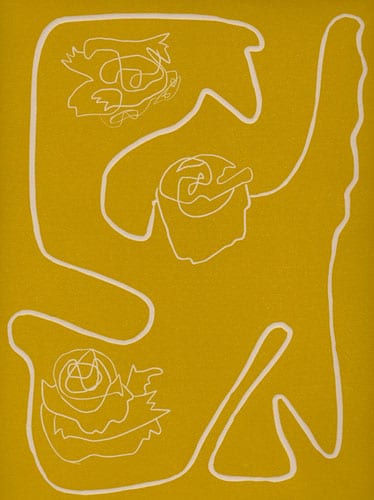ancestral shifts / jorge mata flores

jorge mata flores
ancestral shifts (untitled)
Using the concept of intergenerational trauma as a jumping off point, this untitled piece is an exercise in accessing ancestors. Taking the idea of trauma being passed on a cultural and genetic scale, this piece asks the question whether more than trauma is passed on. If we still hold trauma in our bones, surely the resourcefulness, resilience, and ways in which we found to hold onto our sense of self must be in spirits too. Historically, among indigenous people, two-spirit or gender variant people have been thought to be bridges. Before western ideas of gender and sexuality were brought to the Americas two-spirit people were held in high esteem being called “joyas” or jewels. Often these individuals had roles in society as healers and were thought of as having magic. Through the process of colonization, much of the history and visibility of queer and gender variant people has been hidden: we have been forced to hide our magic as a means of safety. Still we found ways of existing and displaying our magic. “ancestral shifts (untitled)” comes through the act of letting my hand move freely as a ritual to let my ancestors speak through me. If lived experiences and spirit are passed on as deeply as genetics, and two-spirit people are thought to be bridges, for this piece I am merely serving as a vessel for the story my ancestors are trying to tell me. What comes through for you in this form?
The Queer Ancestors Project
The Queer Ancestors Project is devoted to forging sturdy relationships between LGBTQI people and our ancestors. Using history as a linchpin, we build community by providing Queer and Trans artists, age 18 to 26, free interdisciplinary workshops in printmaking, writing, and Queer history. Public exhibitions and readings of their work provide a window on the past through which the larger community can glimpse our collective future.
The LGBTQI community has a limited visual record, or none at all, of significant Queer events before the 1970s, particularly in the histories of Queers of color and transgender people. This lack of imagery makes it harder for LGBTQI people to connect with, learn from, and be inspired by our history. Just as photographs from your early life help to anchor personal memories, a visual record – even an imagined one – can bring historical events to life, creating the kind of indelible connection that enables us to engage deeply with our ancestors.


